How To Do Line Art On Canvas
Line in art is a primitive only powerful course of artistic expression. Information technology's a dynamic technique that captivates viewers and creates affect regardless of the format or media type—making it foundational to all great blueprint.
Whether y'all create analog or digital line art, the impact of the art form is unmistakable. Learning about line fine art, including how and why to exercise it, will help you get a better, more effective, and more dynamic artist. But first, let's start with the basics.
What is Line Art?
The art of line cartoon has quite a legacy. In fact, the earliest line fine art drawing known to engagement is more than 73,000 years one-time. As the craft has evolved considerably since then, our depth of noesis of line art and its application for it has deepened considerably equally well. So much so that many of the world's all-time-known artists, such as Leonardo da Vinci, Albrecht Dürer and Pablo Picasso—as well as gimmicky icons like Jackson Pollock, Bridget Riley and Keith Haring—take created powerful art by wielding simple lines with purpose and expertise.

To define line fine art, you must start define its core element—the line itself. According to the folks at the J. Paul Getty Museum, "A line is an identifiable path created past a bespeak moving in infinite. It is ane-dimensional and can vary in width, direction, and length.
According to art scholars, there are five types of line in art:
- Curved
- Diagonal
- Horizontal
- Vertical
- Zig-Zag
The line art definition nosotros use at Skillshare is an active i: to create an illustration using basic strokes of varying weights and angles that demonstrate form and depth.
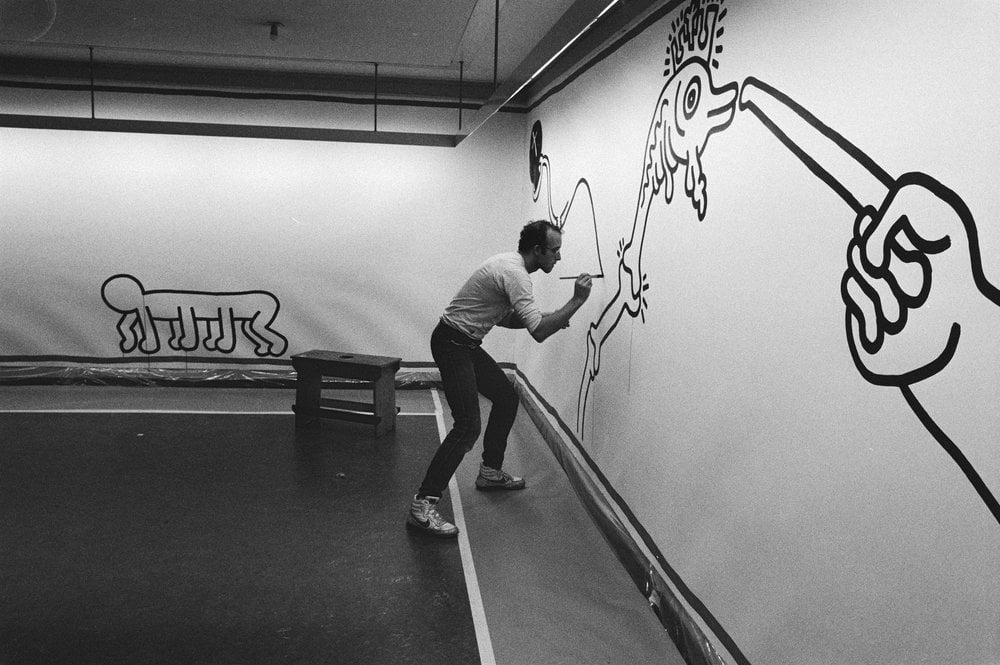
The Science Behind Line Art
Drawing with lines is not a talent bestowed upon a select few gifted artisans. It's a skill that tin can be learned with intention and do–and it'south more useful than you may call back.
On a basic level, drawing with lines helps you communicate with the 65 percent of people who are visual learners. Call back most the times when you've had to give someone directions to your business firm, seen a passenger vehicle describe up a play in sports, or planned where the furniture should go in your new place. Uncomplicated lines can convey a lot of data apace, and people are bound to call up information technology.
"Those who doodled during the study had a 29% improved call back compared to those who did not doodle. "
Drawing with lines—even airheaded ones like doodles in the margin of a notebook—can as well aid you retain data yourself. A 2009 report published in the journal Practical Cerebral Psychology asked participants to listen to an intentionally boring message on the phone. Some were instructed to doodle while listening, and others were not. Those who doodled during the written report had a 29% improved call back compared to those who did non doodle.
Finally, practicing cartoon with lines can raise your creativity and alter your brain. Dartmouth Higher psychologist Alexander Schlegel demonstrated this in a report by scanning students' brains before and after they took a three-month course in observational cartoon or painting. As a result of the consistent practise, the researchers found that the brains of the students literally evolved in the areas that back up creative thinking.
No affair what kind of line art y'all create, or how yous create it, regularly practicing the craft can be useful to your career, your audiences, and your hereafter creative imagination.
The Types of Line Art
Traditional, Analog Line Art
One of the most bonny aspects of using line in art is that it's a technique that works beyond nearly every media. The subjects and applications of your line art drawings—whether they are nonetheless lifes, portraits, cartoons, or landscapes—tin be as varied as your imagination allows.
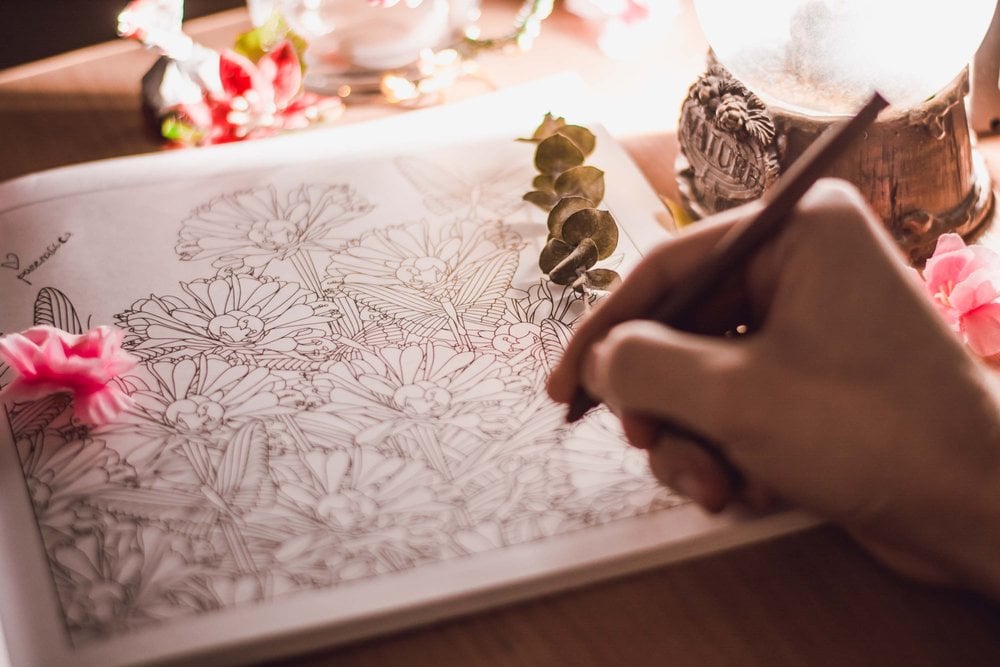
If y'all experience comfortable drawing in any chapters, you tin can create neat line art. Hither are the tools you'll need to get started:
- Cartoon utensils. For a deep-dive on proven products for you to consider, bank check out these guides on pencils and markers by artist Jessica Stewart.
- Paper. A larger surface is meliorate because information technology allows you more range of motion to create higher quality lines. Make sure that your paper type matches your cartoon utensil.
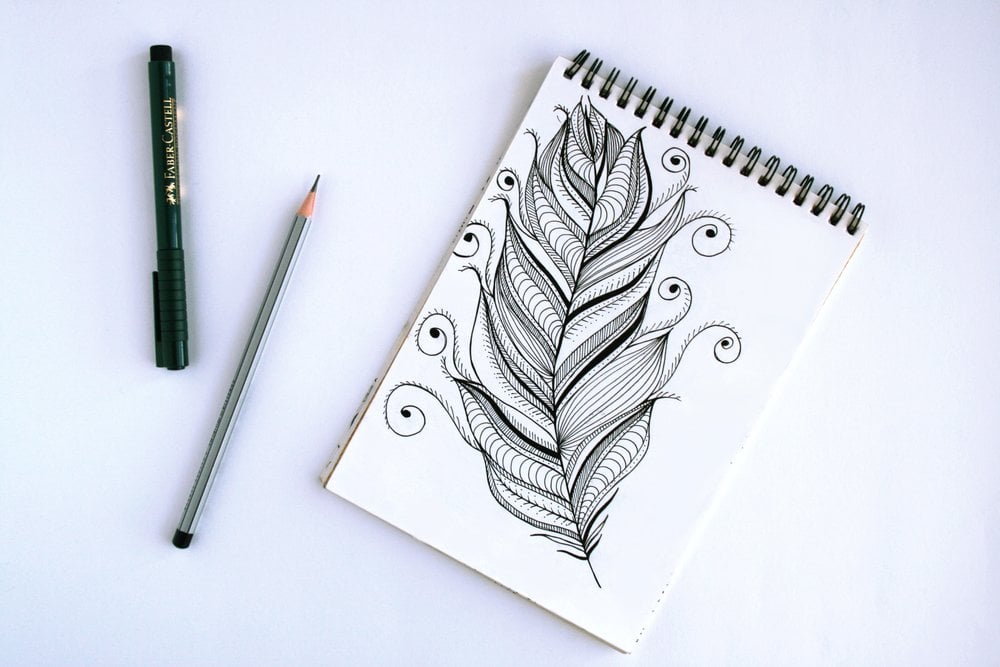
Before y'all showtime sketching, there are a few things to proceed in mind:
- Get-go light and focus on quality of your lines. Depict slowly, softly, and with your whole arm. Get the sketch right without applying too much weight. Take your fourth dimension, erase and redraw as needed. The goal is to get the drawing to a place you tin can be happy with before you lot start adding lines with significant weight.
- Increase the weight of your lines and trace over your best. Once your cartoon is lightly sketched, you can redraw them with increased weight. Become back over the lines that are most critical to your cartoon—not every unmarried line. If y'all decide to scan your work subsequently, the lighter lines won't exist picked upward every bit easily, so creating bolder lines from the first will keep your art looking dynamic, even in Photoshop or Illustrator.
If you lot desire to create line art that is less orthodox, consider using other drawing materials. Historically, nearly line art has been created using a pen, pencil, marker or brush, simply there are exceptions–non all line art is manus-drawn. In fact, many of the earliest and nigh enduring examples of line art were created using woodblock carvings and metallic engravings.
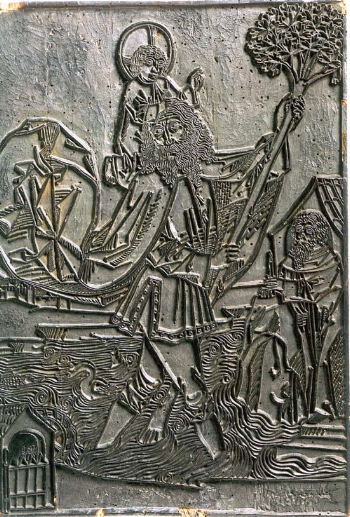
Woodblock
Woodblock line art involves making relief cuts into forest. The artist carves away the areas of the image that they don't desire to print. What'due south left are the raised lines that are pressed into ink and onto the surface existence printed—similar a rubber stamp.
The Diamond Sutra, an ancient volume discovered in a hidden cavern in China by Sir Marc Aurel Stein in 1907, is the earliest known instance of woodblock press. Experts say a single wooden block was used to create this line art tome in 868—long earlier the printing techniques popularized in the Westward past Johann Gutenberg in the 15th century.
Engraving
Engraving is a line art technique that operates based on the changed principles of woodblock printing. With engraving, lines are etched into metal to form the desired image. And so, ink is applied to fill the grooves, and the metal plate is pressed to create a print. Many of the Onetime Chief Prints—the term that refers to the collective printed works created between the 14th and early 19th centuries—were created using engravings to produce intricate textures, patterns and designs.
Digital Line Fine art
Although some artists continue to work with simply analog materials, modernistic engineering has expanded the ways that others do line fine art. Those individuals either physically draw their line fine art and then scan it, as noted in a higher place, or digitally draw it using an electronic toolkit.
If you lot're comfy using a stylus and tablet, cartoon digitally may be the fastest and best method for you. There are iii things you lot'll demand to consider when it comes to digitally drawing line art: Hardware, Software and Technique.
Hardware
Tablets and stylus' pens and brushes are the go-to tools for anyone who wants to dabble in digital line fine art. At that place are dozens of models on the market – from the very loftier-toll betoken, to tools that are much more affordable. Looking for the latest and great stylus pen or brush? This listing will help you lot sort through your options. Ready to to buy a drawing surface? If you like working direct on a screen, there are enough of digital surface products to cull from, or if you'd prefer to piece of work detached from your monitor, bank check out the wide range professional-level graphics tablets on the market today.
No matter what equipment you aim to buy, its critical to give it a test run (or at least hold information technology in your easily) before you lot make your terminal decision. Every artist is unlike, and yous may detect that later on testing different devices for weight and mobility y'all terminate the ownership process with a different preference than when you began.

Software
Whether you've dabbled in digital line fine art before or non, it'due south critical to select a software that you empathise and trust. Photoshop, Art Weaver, and Procreate are just a few of the dozens of software options bachelor to digital artists. Test software, read reviews and compare prices before you lot commit – but don't worry, there's ultimately no manner to brand the wrong conclusion. Every program has its advantages and disadvantages, the important matter is that you lot choose the ones that feel comfy to you – and then that you're able to create what you desire, when you want.
Technique
Line art is as varied every bit lines themselves, and there are merely equally many techniques to consider. That said, if you're working on a tablet or surface, there are a few tips and tricks that will assistance y'all create line fine art specifically for the digital realm. Ian O'Neill, a self-taught artist, offers great tips for anyone thinking nearly getting started in applying the techniques of line art in digital form. In addition to providing detailed screenshots of his work in progress, he articulates which brush sizes and canvases are best to utilise, what the differences in line weights mean for your drawings, and why information technology'south important to learn how to draw from your shoulder instead of from your wrist.
Creating Your Own Line Art
I of the most freeing things about line art is that in that location is no "right way" to do it. The artist can employ pens, pencils, brushes, wooden blocks, metal slabs, computers, spray pigment or digital surfaces to create their work. The key to creating keen line art, though, is to ascertain what matters to y'all before you go started.
A Gratuitous Form Arroyo
Are you lot someone who uses art as an outlet? If so, information technology may make sense to throw training to the wind and get down to sketching and crafting whatever comes to you in the moment.
Notice an inspiring location where y'all tin can work undisturbed for a long period of fourth dimension, go your materials together, and surrender yourself to emotion as you lot enjoy expressing yourself.
A Structured Approach
If you are someone who prefers to follow a process when creating your fine art, take your time to make up one's mind how yous desire to develop any new slice of work.
Practise you want to be lighthearted? Soft, sweeping lines tin can help you lot reach that. Or are you going for something more solemn and serious? Thick, tightly notched lines tin evoke that feeling instead. If you are intentional most the subject or object that you're drawing, and the emotion you plan to evoke, line art can assistance yous attain your creative vision.
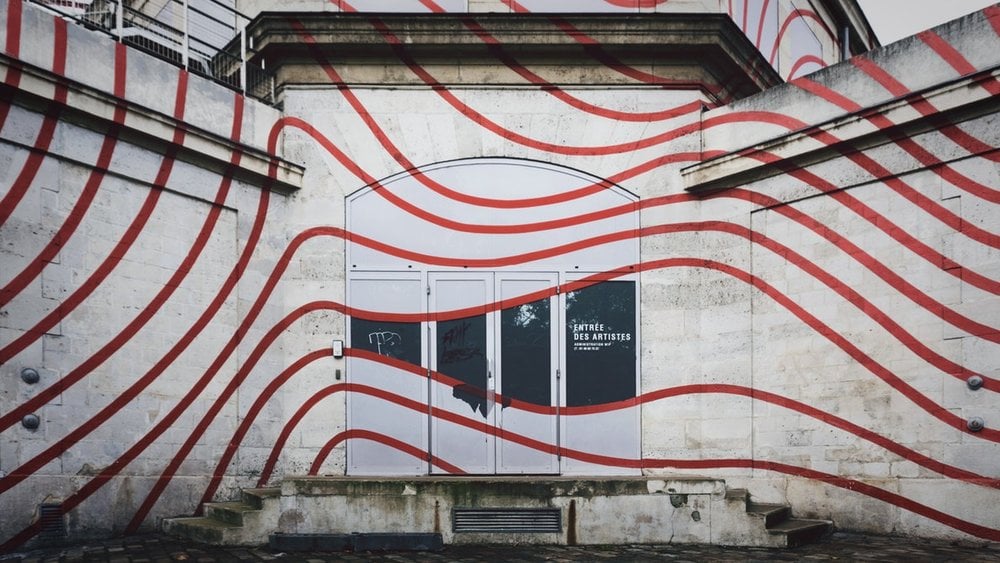
Creative Exercises
Regardless of your skill level, line drawing tin make for a fun and creative endeavor. Here are some exercises to put your inventiveness and line-drawing skills to the examination.
Exercise #1: The 1-Liner
This popular line art exercise is one that requires the artist to draw using i, continuous line. Unlike traditional sketching where you lift your cartoon utensil off the folio after each stroke, you proceed your pen on the paper for set up amount of time and see what y'all tin create.
What you lot need:
- Pen
- Paper
- Timer
- Uninterrupted time
What you do:
- Gear up a timer for five minutes
- Put your pen to newspaper and brainstorm to draw
- Don't lift your pen until the timer runs out
Why this is a good do:
- This exercise challenges you to flex your inventiveness by working within constraints.
- You can film the process and enjoy watching the design unfold afterwards.
Practice #two: Cross-Contours
The word profile comes from the French give-and-take for outline. Profile line art is a technique that involves using lines the edges, or contours, of the object that you lot're drawing in order to define its shape.
What yous need:
- Pen
- Paper
- Image of your subject to reference (or, for experts who are able, simply visualize the bailiwick in your mind)
What you exercise:
- Look at (or visualize) your subject
- Use a series of layered lines to outline your subject. The lines should bend to create depth.
Why this is a good do:
- This exercise challenges you to use one-dimensional lines to create three dimensional shapes.
- Shading, color and capturing modest textural details are de-emphasized in in contour line drawing; the point is to ascertain your object with lines solitary.

Less is More than
Line art is sometimes compared to the best minimalist fine art considering it employs basic elements, in this case lines, to create figures, dynamism, move, and/or perspective. Although it appears to be uncomplicated, the best line art makes statements, challenges worldviews and provokes its audition. Other times, information technology helps artists accomplish other artistic goals past helping them evolve their artistic thinking, manual dexterity and problem-solving skills. Either way, the range of strokes, weight, length, and tools an artist must choose from in order to create their own means that fifty-fifty the "simplest" pieces of line art are the result of a complex and of import creative do that tin can take years, or even decades, to master.
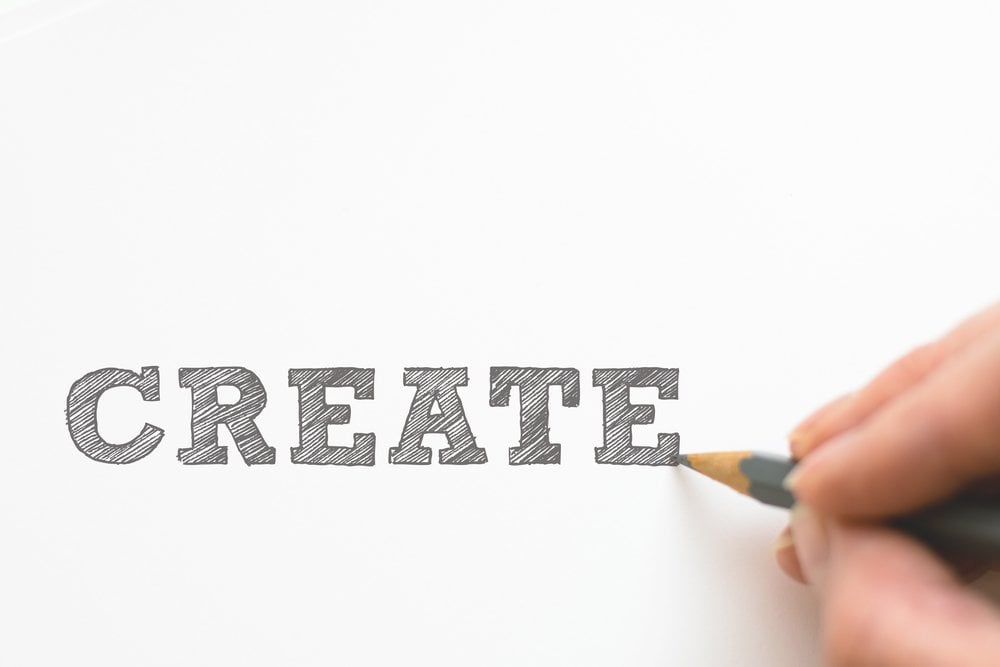
Want to learn more than well-nigh line art? Skillshare has thousands of artistic classes on line art, analogy, doodling and more.
Source: https://www.skillshare.com/en/blog/getting-creative-with-line-art-everything-you-need-to-know/

0 Response to "How To Do Line Art On Canvas"
Post a Comment